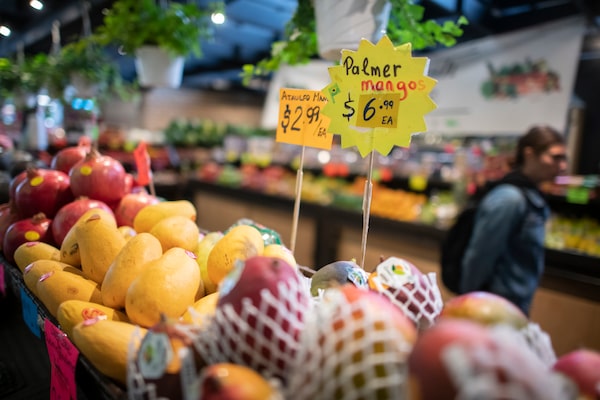
Shoppers buying groceries at the Urban Fresh Produce stand at Toronto’s St. Lawrence Market on May 18.Fred Lum/The Globe and Mail
At grocery stores and restaurants, the price of food is taking a growing bite out of household paycheques, and soaring prices for farm products could be a sign of more inflation pain to come.
In March, the farm-products price index, which Statistics Canada uses to measure the change in prices that farmers receive for the sale of agriculture products like crops and livestock, jumped 31.5 per cent from the year before. It was the fastest price growth since the early 1970s, when surging demand, poor supplies and rising energy costs caused food prices to spiral upward.
Eerily similar conditions exist today, with Statscan blaming rapid farm-product price increases on strong global demand, supply chain disruptions, “geopolitical uncertainty” – meaning Russia’s invasion of Ukraine which has crippled one of the world’s largest grain producers – and soaring energy and fertilizer costs.
The question is how much more will high farm-product prices spill into consumer inflation rates. Food costs as measured by the consumer price index tend to lag farm receipts. That’s because it takes time for higher crop and livestock prices to make their way to grocery-store shelves and restaurant menus.
But with farm products accounting for the largest input cost for food manufacturers, further increases seem likely. In April, food from stores rose in price by 9.7 per cent, the fastest pace since the early 1980s.
If it’s any consolation, not all farm products are soaring. While farm prices for grains were up a staggering 65 per cent and livestock prices climbed nearly 11 per cent, potatoes actually declined 3.6 per cent year over year.
Decoder is a weekly feature that unpacks an important economic chart.